DXY fell away Friday night:
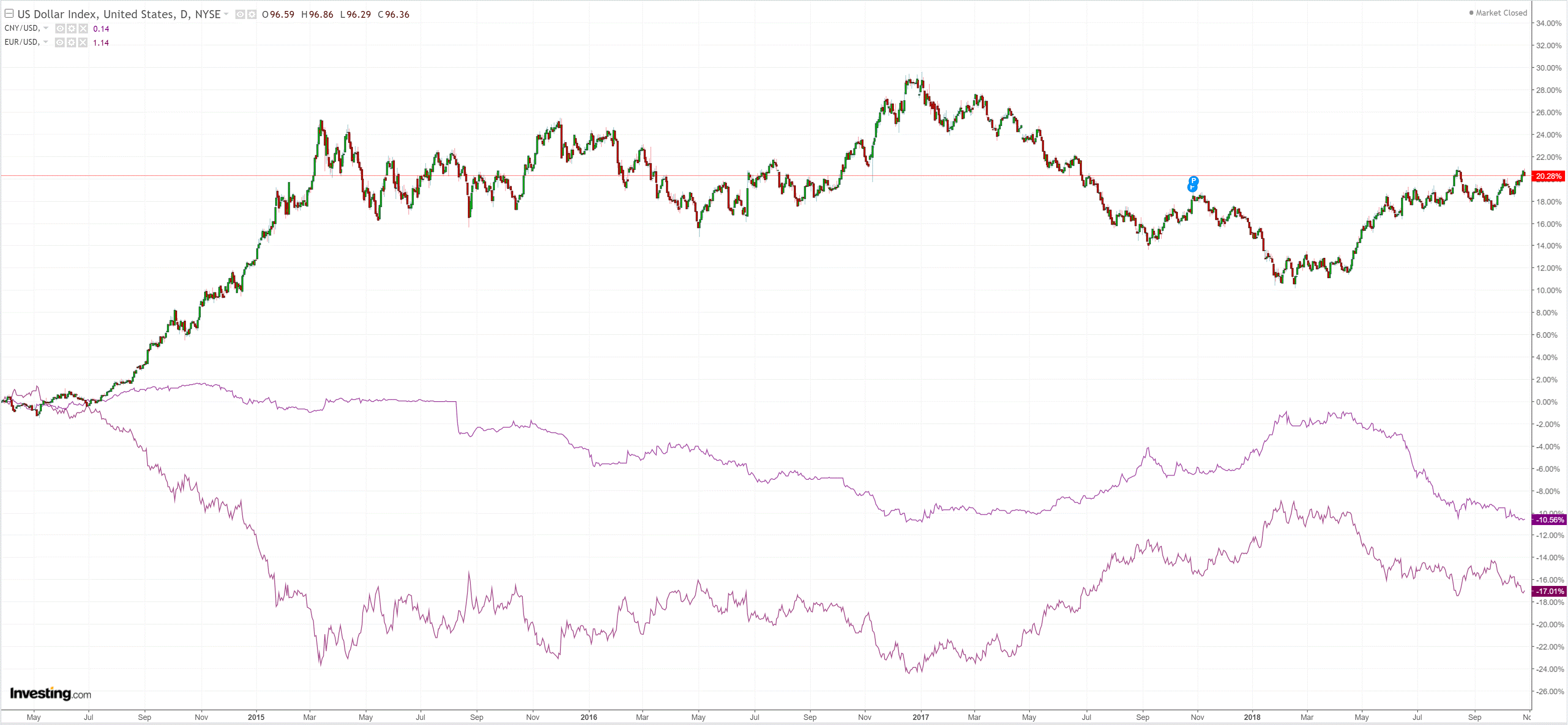
AUD lifted:
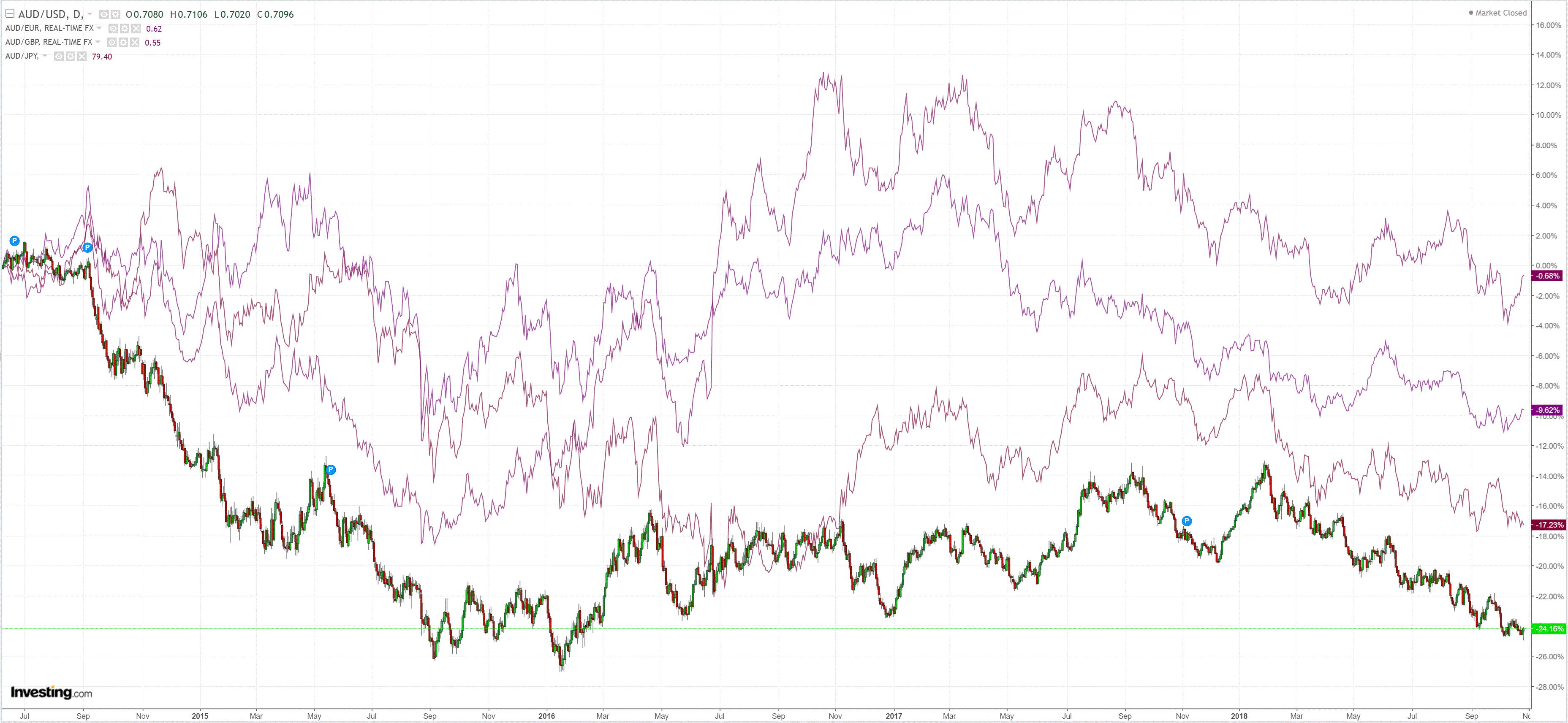
EMs were mixed:
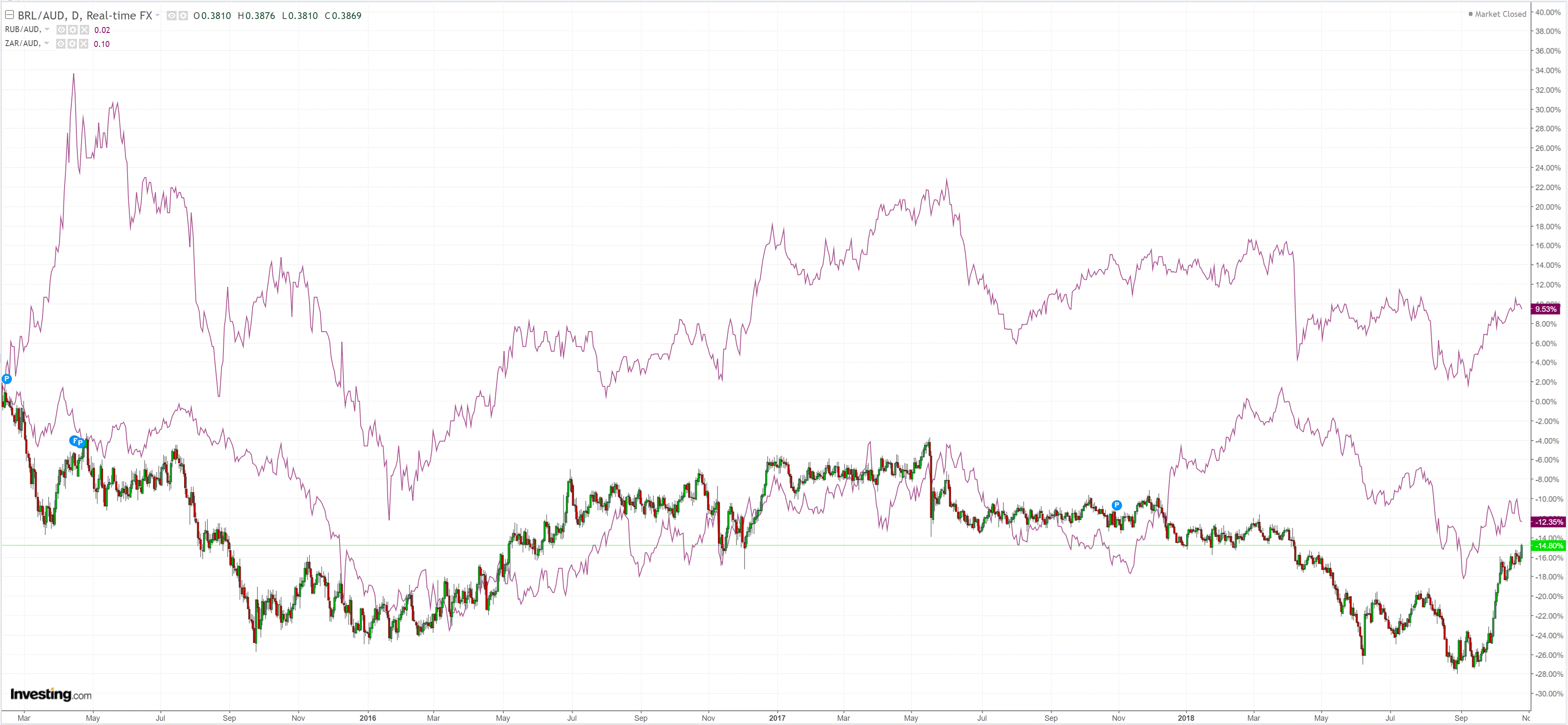
CFTC positioning is still very shot at -70k contracts, offering AUD support:
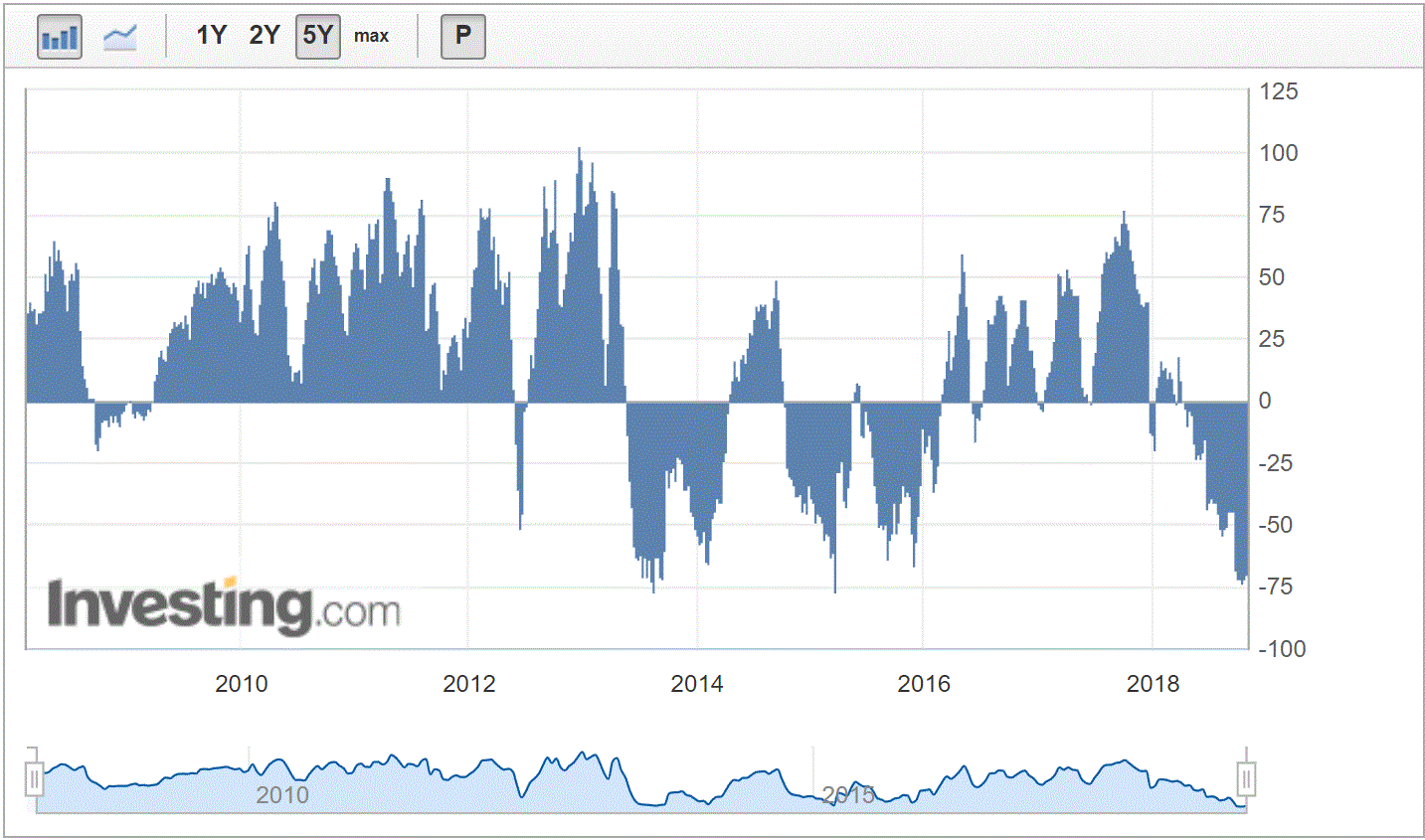
Gold tried and failed:
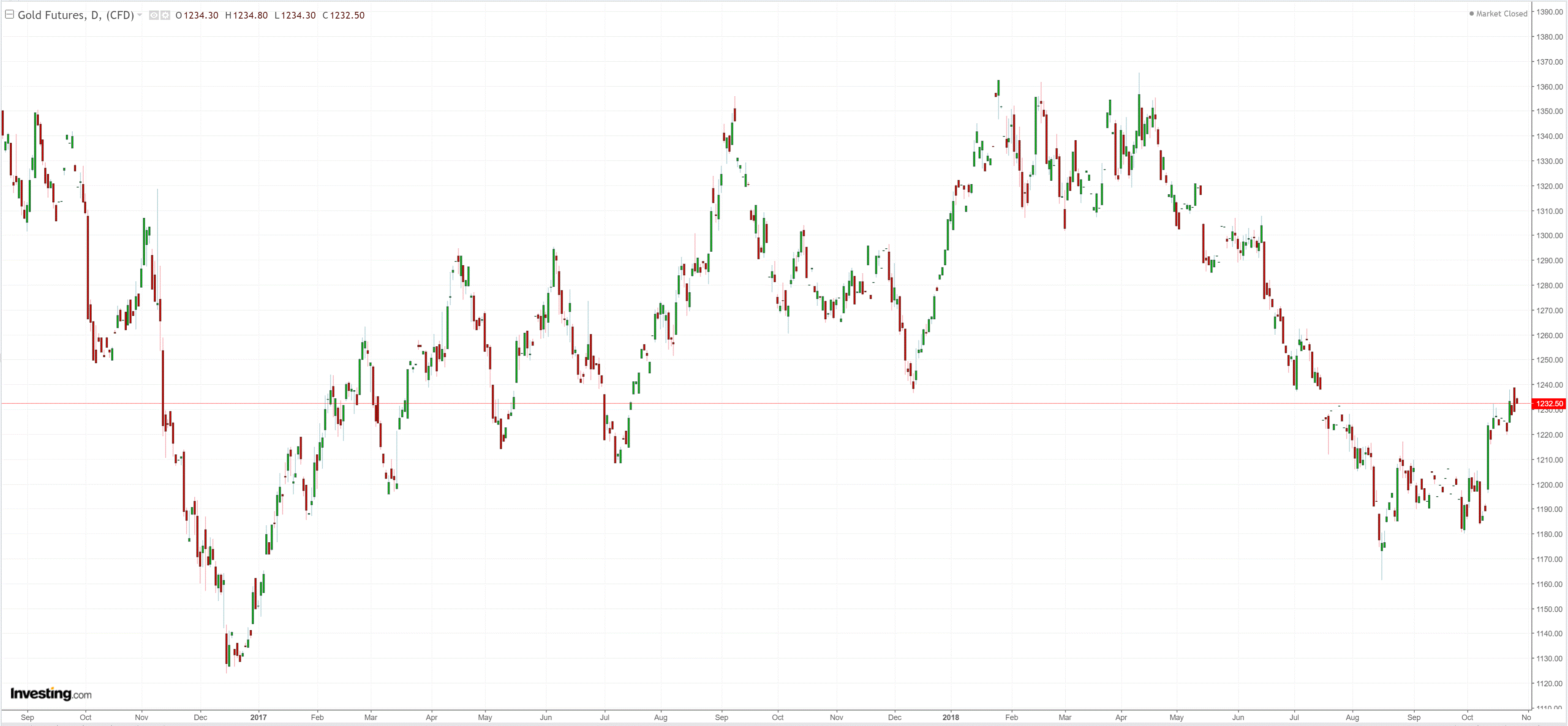
Oil firmed:
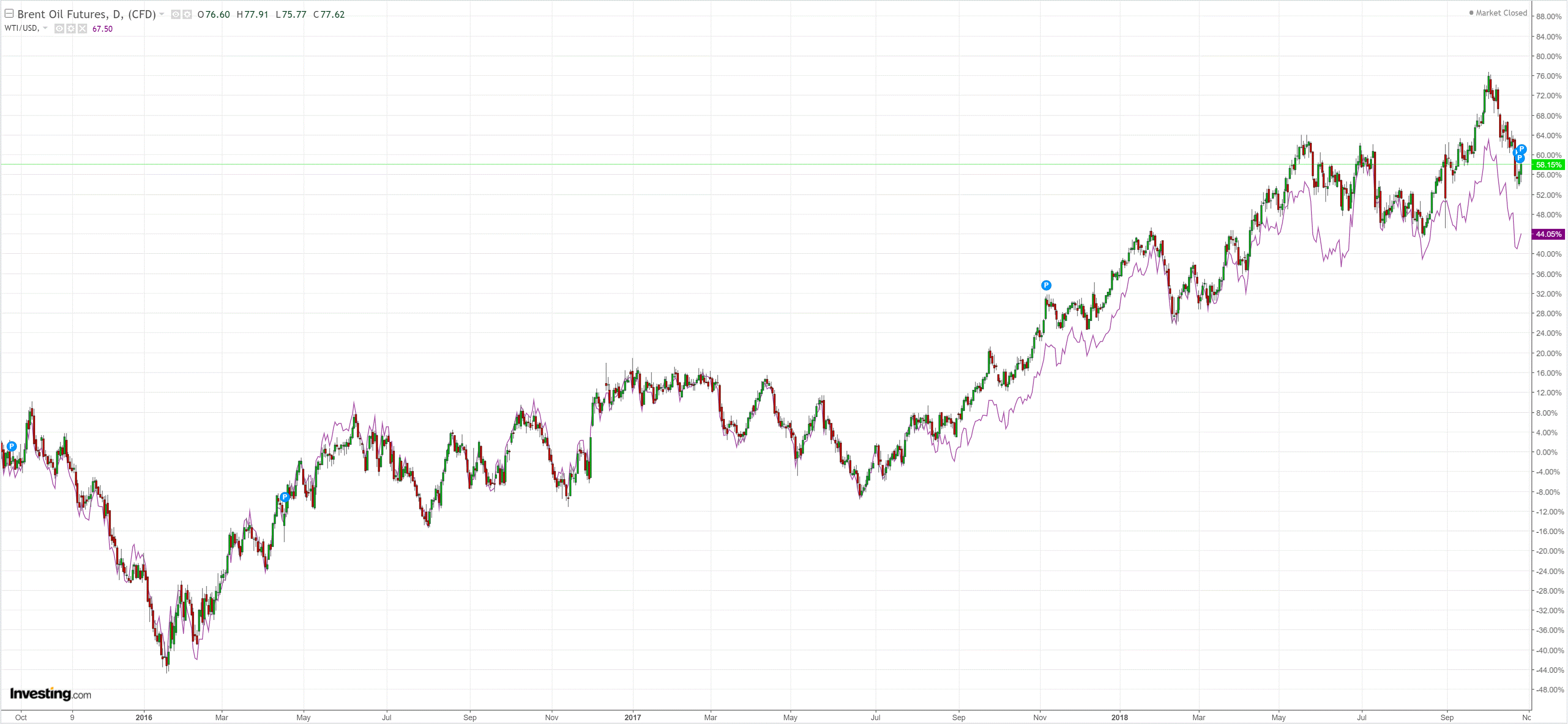
Base metals were mixed:
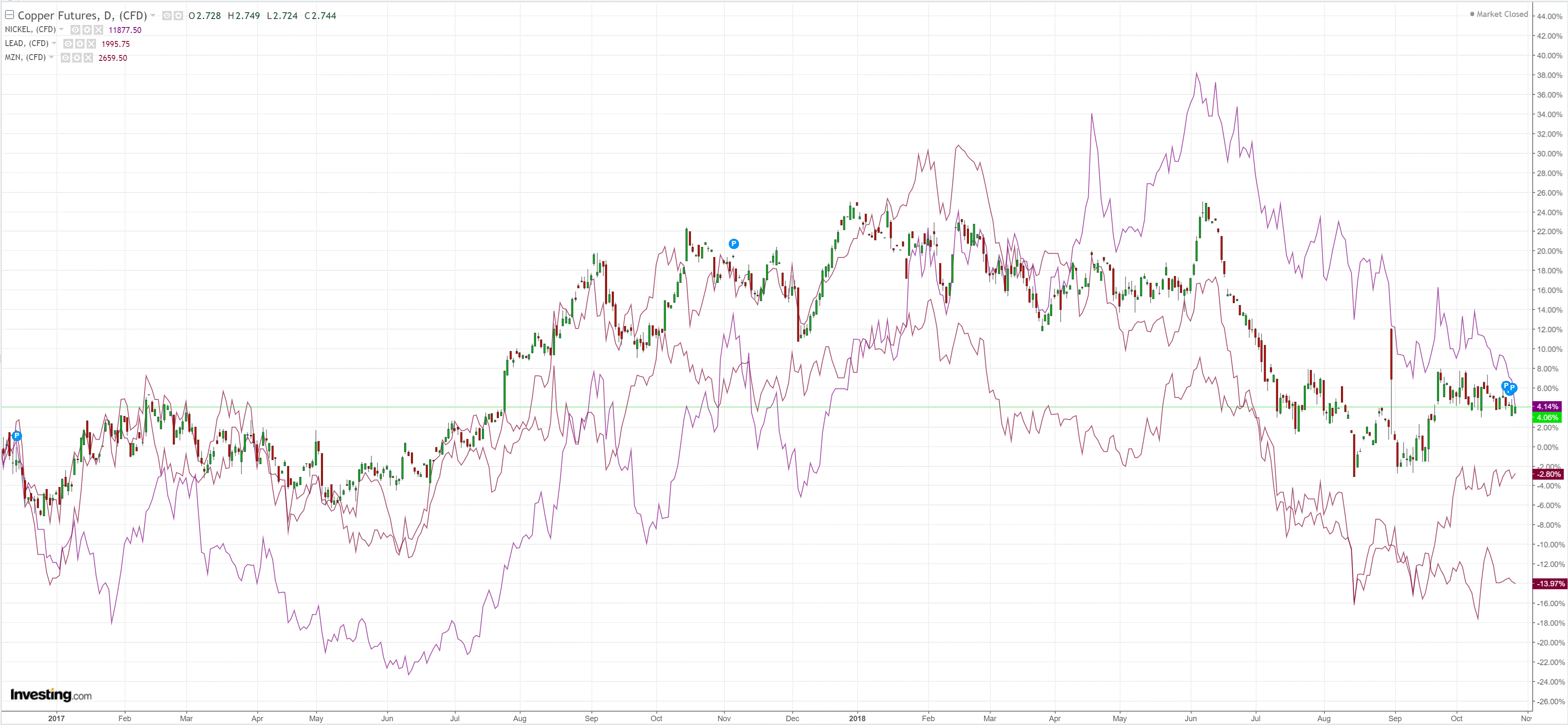
Big miners gained:
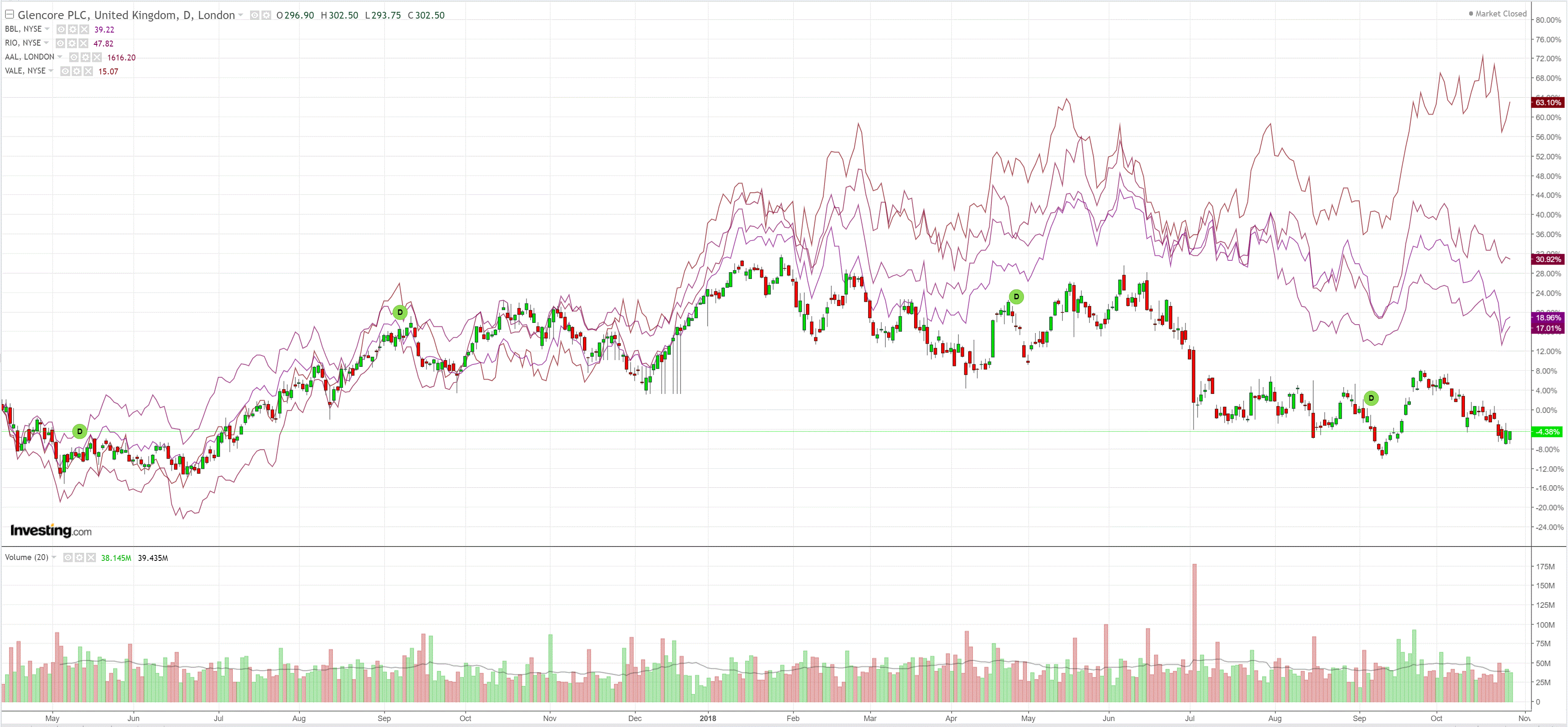
EM stocks hit new lows:
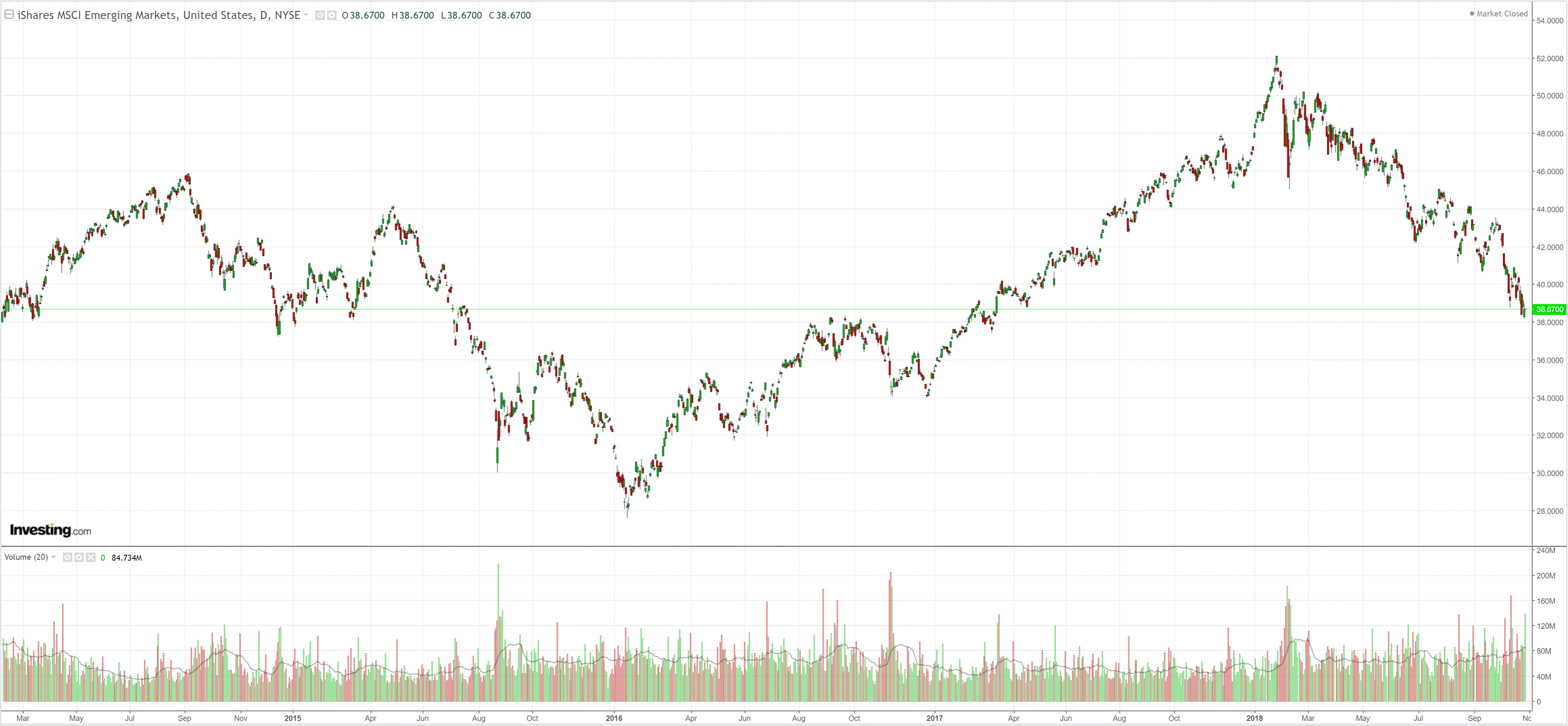
US high yield is catching down to EM, a bad sign:
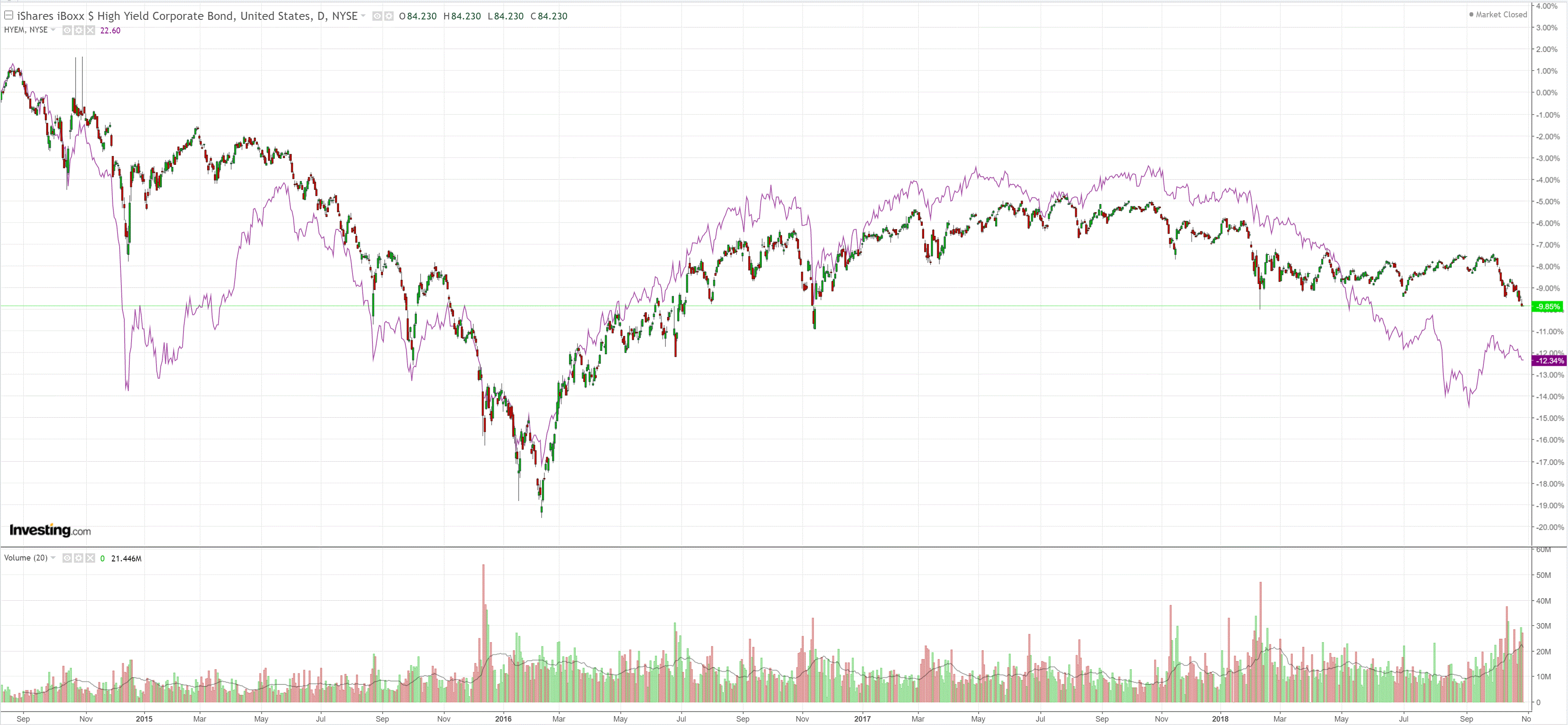
Treasuries were well bid:
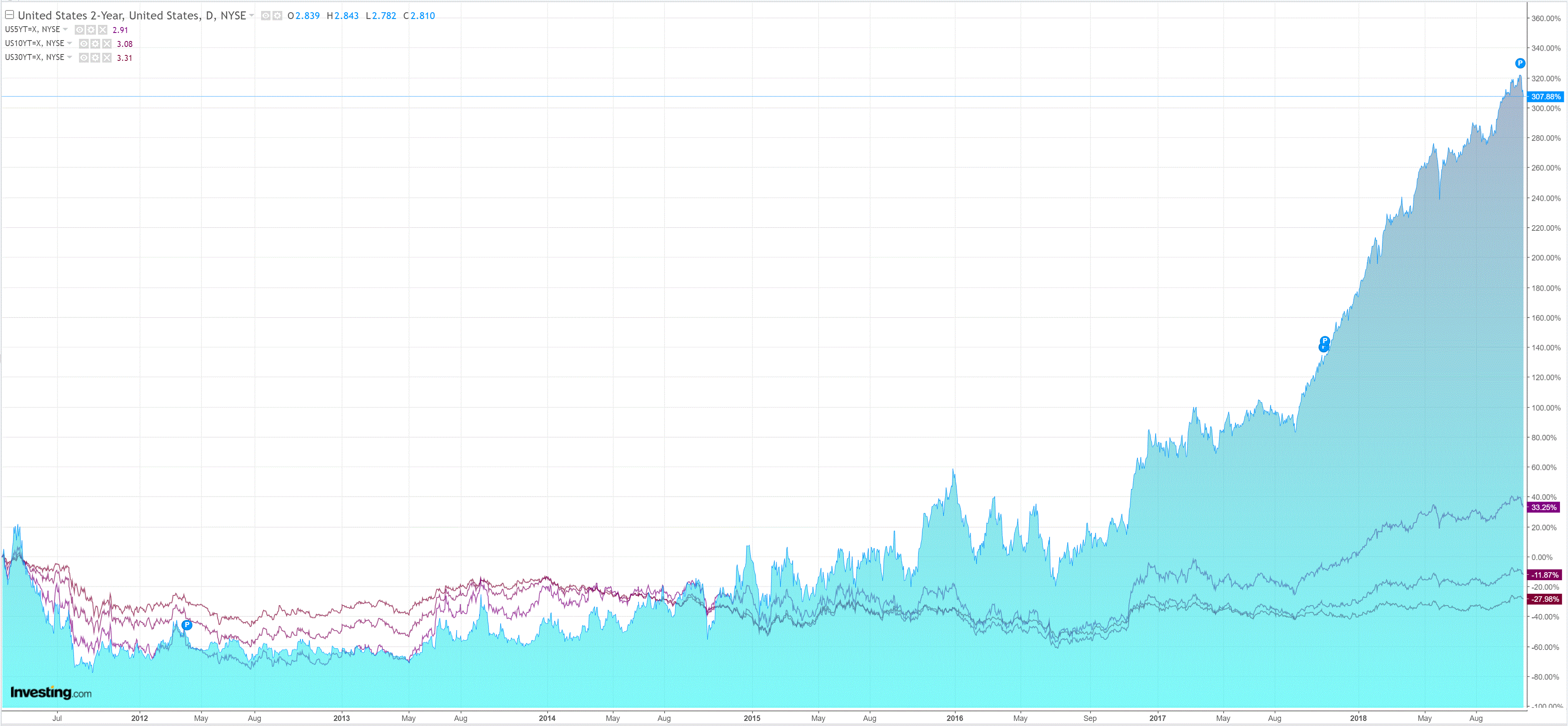
And bunds:
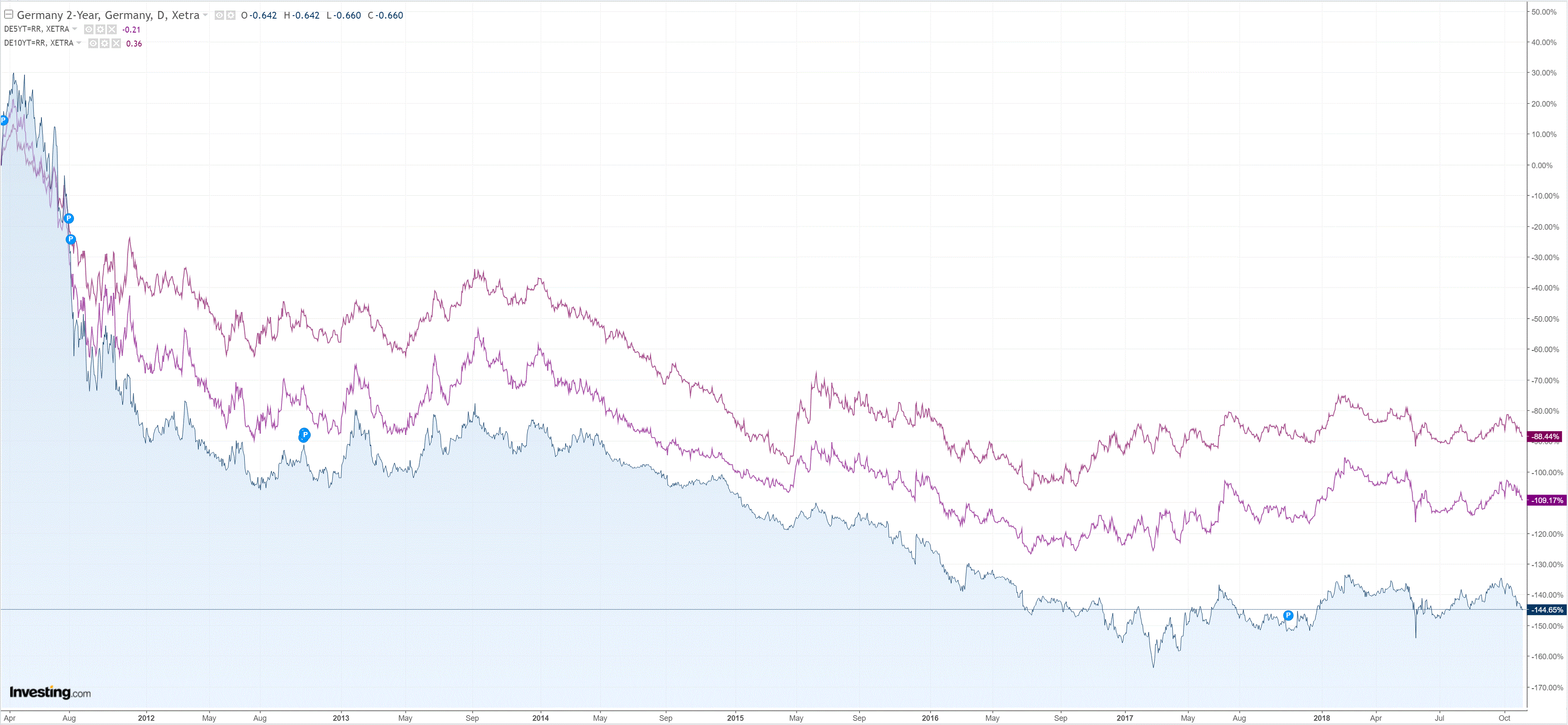
Italy is off the boil:
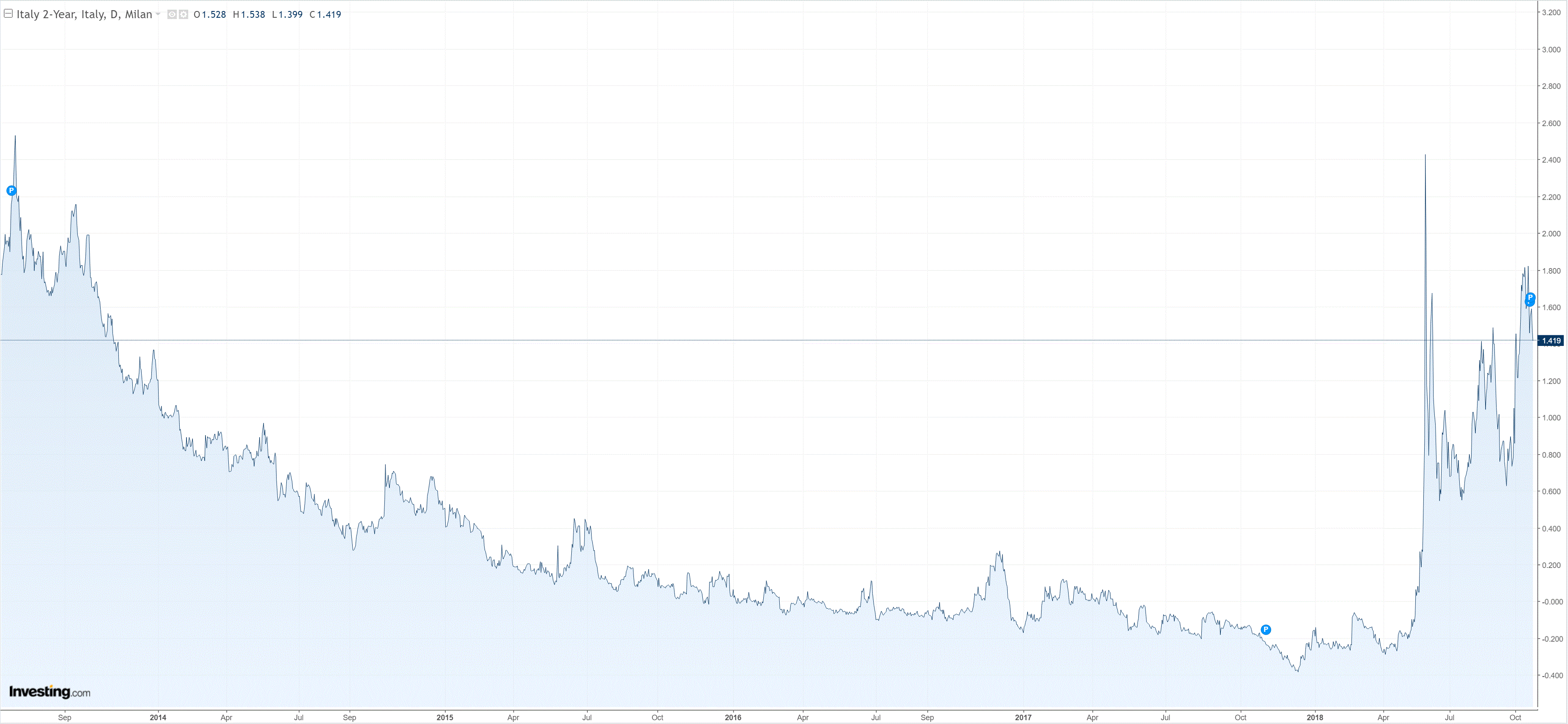
Stocks fell sharply but managed to close above last week’s lows:
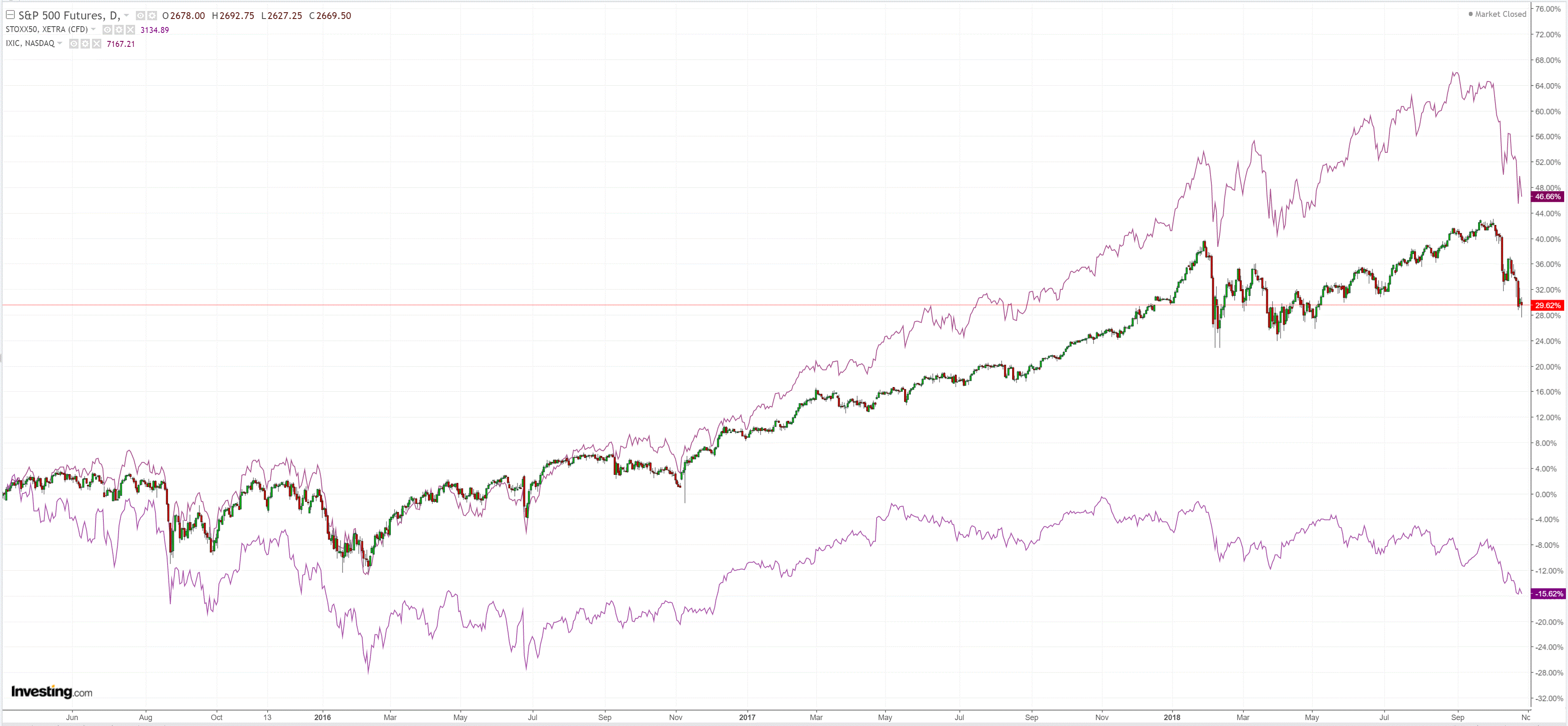
Westpac has the wrap:
Market Wrap
Global market sentiment: US equities fell sharply on Friday, the S&P500 trading at a six-month low and closing down 1.7%. The tech sector led the declines, key stocks Amazon and Alphabet posting disappointing earnings results. US bond yields and the US dollar also fell, despite decent GDP data, allowing AUD and NZD to recover.
Interest rates: The US 10yr treasury yield fell from 3.11% to 3.06%, the 2yr yield from 2.84% to 2.78%. Fed fund futures yields repriced the chance of another rate hike in December, from 75% to 70%.
FX: The US dollar index closed down 0.3% on the day. EUR bounced off a two-month low at 1.1336 to 1.1420. The safe-haven yen outperformed, USD/JPY eking a lower 111.40-112.20 range. AUD initially fell to 0.7021 – the lowest since Feb 2016 – but rebounded with the falling USD to 0.7104. Underperformer NZD similarly bounced off 0.6465 to 0.6533. AUD/NZD ranged between 1.0850 and 1.0880.
Economic Wrap
US GDP grew more than expected in the third quarter, rising at a 3.5% annualised pace (3.3% expected). That is slower than the previous quarter’s 4.2% pace but well above trend. Growth was lopsided in the quarter, consumer spending powering activity at a 4% annualised pace (and contributing +2.7ppts to Q3’s 3.5% growth rate); elevated confidence, tax cuts and a solid labour market were all key background positives. Volatile inventories also made an outsized contribution, adding 2.1ppts to Q3’s 3.5% growth rate. Against that, there are several areas of caution that tempered the GDP result; net exports detracted from growth, as did residential investment, while business investment was lukewarm, rising just 0.8% annualised – its slowest pace in two years and a disappointing outcome given last year’s corporate tax reforms.
Italy’s sovereign rating of BBB was maintained by Standard & Poor’s, although the outlook was shifted from neutral to negative.
Event Risk
The local event calendars are quiet. In the US tonight we have the personal income and spending report for September, which includes the core PCE deflator – the inflation variable which the Fed targets. The median estimate for that is 2.0% annual, which is slightly lower than August’s 2.2%.
JPM summarises my views pretty well:
The percentage of asset classes that has generated positive returns this year is only 20 percent, a share that has never been so low outside of 1970s stagflation episodes and the Global Financial Crisis. Every market but the Nasdaq, Commodities and U.S. Leveraged Loans has underperformed USD cash in 2018.
We had expected outperformance for another two to three quarters given near-neutral Fed policy, record share buybacks and significant deleveraging. This month markets clearly don’t share our time-limited optimism, perhaps given growing fear that the Fed is committing a policy mistake by tightening to restrictive levels eventually.
Does the endgame need to be priced now? If not, 2018 looks like the year of overreaction.
There have been precedents for Equities turning only when the economy enters recession (like around the 2007 recession), which implies a window for owning cyclicals until 2020. There are also examples of stocks turning a year before that growth slump (like around the 2001) recession, which implies cutting cyclicals around the beginning of next year. We have opted for a window in between — so a possible rotation into defensives around mid-2019 — because valuations in early October 2018 were far from the levels reached before stocks peaked in March 2000 (S&P500 forward P/E of 16 vs 21 then) and the real Fed funds rates far from restrictive (0% now vs 4% in March 2000). The drop in EPS growth from early to late 2000 was also much sharper than what we anticipate from 2018 to 2019. (By late 2000, EPS growth was negative).
If complacency is one of the words most associated with the pre-Lehman years – even Queen Elizabeth asked publicly afterwards, “Why did no one see this coming?” – then paranoia may be the one most tied to what remains of this cycle. The second-longest expansion in post-war history and the slowest Fed tightening cycle in three decades has given investors plenty of time to build exposures, but also to study the anatomy of turning points and to contemplate the exit constraints from lower market liquidity.
We are not yet willing to run the year of tracking error implied by holding broadly defensive exposure until the global economy weakens materially, so continue to favor the semi-cyclical strategy instead.
That is the MB Fund view at this point. Our “semi-cyclical strategy” or semi-defensive strategy” has been to get exposure to the boom mostly via tech while bar-belling that against consumer staples. We have also progressively sold into gains so that we’ve been holding much bigger cash balances as we’ve made gains.
So, is it paranoia? To a certain extent. Peak earnings growth is not the end of earnings growth and the outlook remains strong. We are still not spooked by tariff impacts on firms. A co-ordinated global growth slowdown is underway but the US will still be leading and cyclically very strong, China is hitting the gas and there’s more to come. Inflation is still not a problem in our book, especially as the USD rises and CNY weakens, but that does present Cold War 2.0 worries.
Just because you’re paranoid does not mean that somebody is not chasing you!

